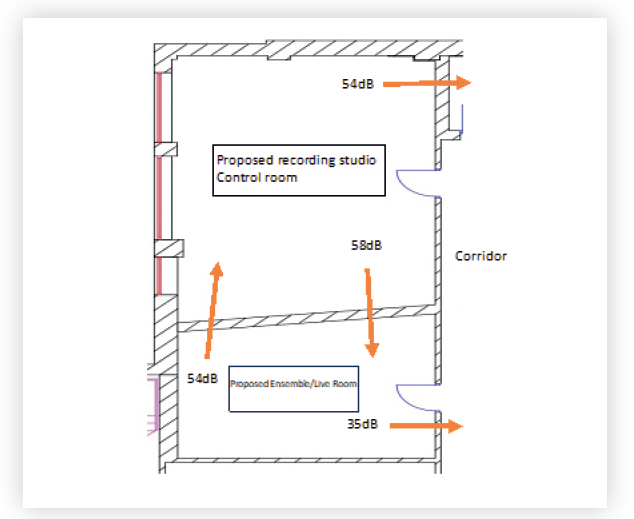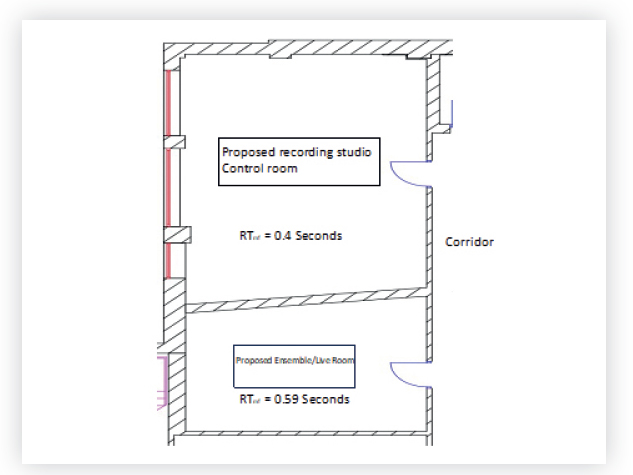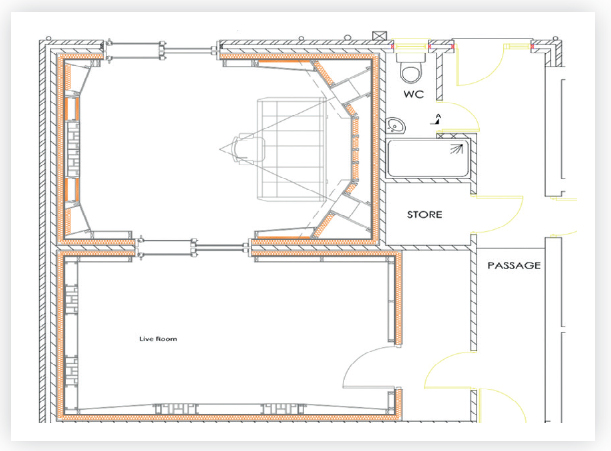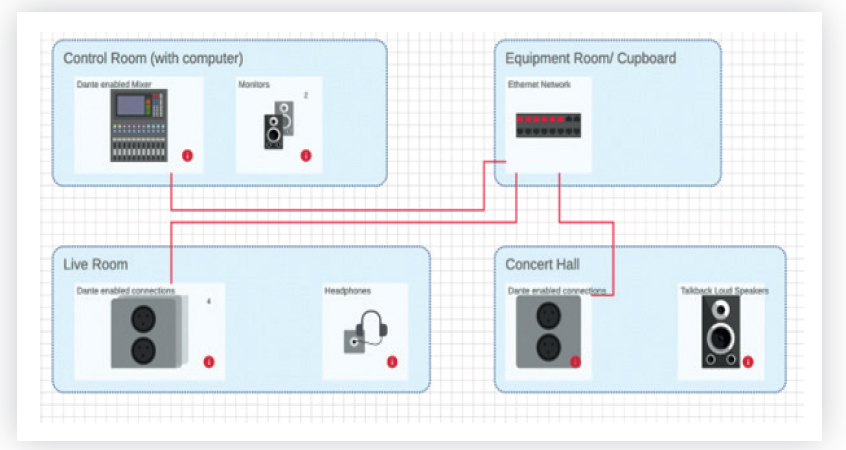
The principles behind building a studio are often the same whatever the project: to manage the sound between adjoining spaces (sound isolation); to control the sound in a space (acoustics), so that critical listening can inform students' work; and to create appropriately equipped spaces. The more effective your build, the less likely students are to disappear after class to their bedroom ‘recording studios’, which, despite what plugin company marketing teams say, can't compensate for bad listening acoustics, bad capture and a lack of musical interaction that's key to recording music at any level.
In my experience, there can be considerable challenges in getting the correct information to the right people in an educational organisation. This can mean producing clear business plans for what a budget will provide in terms of the classroom experience. Ways of getting the best solution include consulting in person with professionals or working remotely using online services.
Around 10 years ago, I was looking for solutions to improve (dramatically) the sound isolation and acoustic properties of an existing educational ‘studio’ space. I found that the challenge was figuring a way to support all project stakeholders with reliable information, so that the changes made would be cost effective and would produce excellent results. The problem is that sound-related construction standards for school classrooms and for recording studio spaces have very different requirements. After a planning meeting in which an inexperienced contractor proposed building an inappropriate large first-floor concrete box, I decided to embark on a journey to ensure we had the correct solution – within our budget.
Sound isolation
If you have to write a business plan, you will know to show value for money, which can also include the student experience and future cohorts. For the long term, my advice is to seek help from professionals and commission an Acoustic Report, which will save time and money.
In a pre-existing build, a good acoustician will come on site and test the sound isolation between spaces. This is normally done by firing test signals via a loudspeaker into a space, and using a microphone and software to measure the sound penetration and give a sound isolation figure for the walls between the adjoining spaces.
Figure 1 shows the measurement of classroom walls using this method. An important point to make is that absolute sound isolation is rare in many professional studios. A key Control Room (CR) principle is to get the sound penetration between spaces low enough so that, when you are listening to music in the CR at normal listening levels, a small amount of penetration is inaudible.
 Figure 1: Measuring sound isolation (calculations based on the Dntw testing standard.)
Figure 1: Measuring sound isolation (calculations based on the Dntw testing standard.)
In this example, drums from the Ensemble Room could reach 120dB. The 54dB sound isolation rating for the adjoining wall was useless, with around 60dB of drums sounds penetrating into the proposed CR.
The spaces in Figure 1 were chosen partly because they have no windows. Visibility in music is important, and video links are a better option and much more affordable these days than high-spec sound-proof windows.
Reverb and other qualities
Acoustic qualities such as reverb (echo) can be tested using an appropriate high-quality mic, speakers and software such as Fuzz Measure. These can fire test-signals into a room and measure the room's response.
Figure 2 shows the mid-frequency reverb time for the same space found in Figure 1. These figures help to determine accurately what acoustic treatment is needed to make the CR an effective critical listening environment, and avoid an echoey wash.
 Figure 2: Measuring reverb
Figure 2: Measuring reverb
Studio and environs
In the end, the most important part of an Acoustic Report is what the acoustician recommends in plain language, regarding what it will take to make a space usable as a recording studio and the potential cost. Whether applied to new- or existing-build projects, this information is the starting point for those signing off the budget.
Figure 3 is what a finished plan can look like, after taking into account the measurements outlined above. The coloured lines represent the isolation shell, which was formed by standard stud walls (not concrete!).
 Figure 3: Finished drawing, with acoustic recommendations
Figure 3: Finished drawing, with acoustic recommendations
If, on the other hand, you don't have the budget for this level of expertise and detailed plan, there is an ever-expanding range of resources online. The acoustic treatment manufacturers Auralex, for example, provide a remote service that allows you to submit information on your proposed space(s); they then provide an acoustic product solution tailored to your needs.
Connectivity
Studio spaces no longer have to be in proximity to each other. IP Audio is a system that allows audio signals to be recorded from anywhere on your estate that has an IT Ethernet network. It uses affordable interfaces such as Focusrite or SSL. This is great news as it can assist high-quality recording of school performances from the spaces they were intended for, and live (if you wish)!
Developed by the company Audinate, the Audio-over-IP system called ‘Dante’ enables the Audio Visual (AV) interconnection of spaces using standard Ethernet-type cabling. This provides simplified audio connections that use standard IT cabling, as pointed out in Audinate's online documentation (see link below). The system enables lossless audio delivered with very low latency (delays) between spaces, with standard CAT 5 and 6 (Ethernet) connectivity.
As Dante does not require the old-school analogue cables between spaces, spaces that are not adjoined and are some distance apart can have audio connectivity without any of the signal loss of analogue cables over long cable runs.
The implementation of such a system should, of course, be discussed with your institution's IT manager. But you can point them to the support Audinate offers on its website, including the guide Implementing Audio-over-IP from an IT Manager's Perspective and the Dante System Designer, an online tool to help you determine your requirements.
Finally, Figure 4 illustrates IP Audio connectivity using Ethernet network cables. This basic outline, drawn using Audinate's online tool, shows the possibilities for recording studio connectivity via Ethernet cables to spaces across the school estate that have Ethernet connections.
 Figure 4: Potential IP Audio connectivity using Ethernet cables
Figure 4: Potential IP Audio connectivity using Ethernet cables
As mentioned, such solutions should be discussed with product manufacturers and your IT manager. I was fortunate enough to have industry friends who gave me guidance, but this article plus a companion piece by Dale Wills (Acoustic design, MT January 2023) should give you valuable starting points, should you wish to travel the same exciting and rewarding road. Personally speaking, the effort was worthwhile; and the evidence was the student experience and the destinations of many of my students since their studies.
Dr Jason Woolley is programme leader, MA Creative Media Production, at Wrexham University.
- auralex.com/get-your-free-room-analysis
- audinate.com/learning/dante-system-designer
- Implementing Audio-over-IP: tinyurl.com/mr4c28hy
- Jason Woolley's studio: wanderlustsound.co.uk




